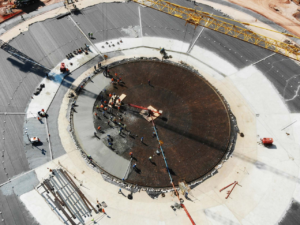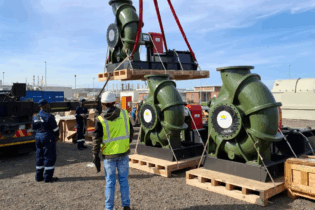Water infrastructure like reservoirs and treatment plants demands strength and durability from concrete. CHRYSO Southern Africa explains how admixtures enhance the performance of concrete in water-related applications – and make it last longer.
Concrete performance and durability underpin the value to society of water-retaining structures such as water treatment plants and storage reservoirs – and admixtures make all the difference.
Challenges, including cracking and permeability, can undermine the strength and longevity of these structures, according to Michelle Fick of CHRYSO Southern Africa’s Concrete Aesthetics Business Unit. “Cracking of concrete, for instance, often calls for urgent and costly maintenance of water-related infrastructure,” says Fick. “In addition to leakage, cracks can undermine the strength of a structure due to corrosion of the steel reinforcing.”
Michelle Fick, BU Development Manager Concrete Aesthetics at CHRYSO Southern Africa.
“Another waterproofing agent is crystalline admixture such as CHRYSO® CWA 10,” she says. “This reacts with moisture to form crystals deep within the pores and capillary tract of the concrete structure.”Admixtures such as plasticisers and super plasticisers are critical in ensuring workability of concrete, which is especially vital to heavily reinforced structures like reservoirs, adds Patrick Flannigan, Technical Manager of the Concrete Business Unit at CHRYSO Southern Africa.

Patrick Flannigan, Technical Manager of the Concrete Business Unit at CHRYSO Southern Africa.
“To ensure water does not collect, a pervious base layer usually needs to be installed,” he says. “This is constructed from no-fines concrete, which allows water to flow away without eroding the sub-base material.”He notes that an admixture like CHRYSO® Easy Drain is ideal for no-fines concrete, as it coats the coarse aggregate to ensure a stronger bond between these particles and the cement-water mix.








